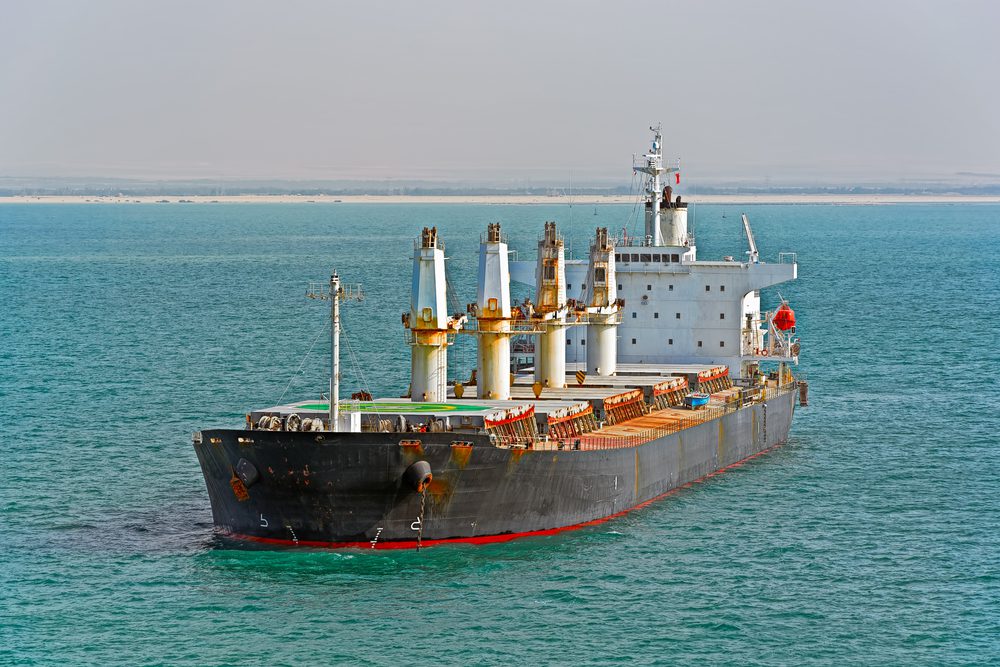Genoa Dockers Walk Out as Italian Unions Protest Against Israel
Striking dockworkers blocked access roads to the port of Genoa in northern Italy on Monday, as part of protests against Israel's offensive in Gaza.

By Igor Grochev / Shutterstock
The Paris MoU has approved its 2017 port state control inspection results for 2017 and adopted its new “White, Grey, and Black” performance lists for flag states and Recognized Organizations (ROs).
The Paris MoU’s annual “White, Grey and Black (WGB) List” ranks flag states from best to worst, from flags with a high performance (White) to flags with poor performance that are considered high or very high risk (Black). The List is based on the total number of inspections and detentions over a 3-year rolling period for flags with at least 30 inspections in the period.
The new “White, Grey and Black List” for 2017 is to take effect from 1 July 2018, at which point it is used to calculate an individual Ship Risk Profile. Typically, flags on the “Grey List” and “Black List” are subject to more stringent banning measures.
The Paris MoU consists of 27 participating maritime Administrations and covers the waters of the European coastal States and the North Atlantic basin from North America to Europe. Its mission is to eliminate the operation of sub-standard ships through a “harmonized system” of port State control.
Each year, more than Annually more than 18,000 individual inspections take place on board foreign ships in the Paris MoU ports, ensuring that these ships meet international safety, security and environmental standards, and that crew members have adequate living and working conditions.
In its newly adopted 2017 “White, Grey and Black List”, the Paris MoU included a total of 73 flags – the same number as last year.
This year’s list had a total of 40 on the “White List”, 20 on the “Grey List” and 13 on the “Black List”. This compares with 42 on the “White List”, 19 on the “Grey List”, and 12 on the “Black List” last year.
New to the “White List” this year, i.e. flags with a consistently-high performance record, are the Republic of Korea and Poland. The top performer this year is France, followed by the Cayman Islands, Netherlands, Denmark and the United Kingdom, respectively.
Korea’s move to “White List” comes after one year on the “Grey List”.
Flags with an average performance are shown on the “Grey List”. On this year’s “Grey List” a total number of 20 flags are recorded, an increase of one compared to last year’s list.
New to the “Grey List” this year is the Islamic Republic of Iran, Kazakhstan, the Russian Federation, and the United States, which were all on the “White List” last year.
The United States moved back to the “Grey List”, ranking as the 43rd best performer behind Algeria and Kazakhstan on the “Grey List”.
From being a non-listed flag last year, Tuvalu is now on the “Grey List”.
The only change to the “Black List” this year is the addition of the Ukraine. The Republic of Congo came in last as the worst performer.
For several years, the Committee has also closely monitored the performance of ROs acting on behalf of flags.
To calculate the performance of the ROs, the same formula to calculate the excess factor of the flags is used. A minimum number of 60 inspections per RO are needed before the performance is taken into account for the list. In the RO performance table to be used for the calculation of the Ship Risk Profile from 1 July 2018, 34 ROs are listed.
In 2017, there was a only a small shift in RO performance compared to last year.
This year, three ROs are in the very low performing position against none last year. Three ROs are in the low performing positions compared to four last year and 17 ROs are in the medium position of the list compared to 19 last year.
Details of the responsibility of the ROs for detainable deficiencies have been published since 1999. When one or more detainable deficiencies are attributed to an RO in accordance with the Paris MoU criteria, this is recorded as “RO responsible” and the RO is informed. Out of 685 detentions recorded in 2017, 99 or 14.5% were considered RO related compared to 13.9% in 2016.
Port State Control regimes carry out inspections on ships to monitor and enforce compliance with international regulations. Since the first regional PSC agreement was signed in 1982 (the Paris MoU), the IMO has since supported the establishment of a global network of eight additional regional PSC regimes.
The nine regimes now cover Europe and the North Atlantic (Paris MoU); Asia and the Pacific (Tokyo MoU); Latin America (Acuerdo de Viña del Mar); Caribbean (Caribbean MoU); West and Central Africa (Abuja MoU); Black Sea (Black Sea MoU); Mediterranean Sea (Mediterranean MoU); Indian Ocean (Indian Ocean MoU); and Persian Gulf (Riyadh MoU). The United States Coast Guard maintains the tenth PSC regime.
During an IMO workshop in October 2017, the world’s Port State Control regimes agreed to consider moving away from black/grey/white lists and towards expanding an individual ship risk profile approach.

Sign up for gCaptain’s newsletter and never miss an update

Subscribe to gCaptain Daily and stay informed with the latest global maritime and offshore news
Essential news coupled with the finest maritime content sourced from across the globe.
Sign Up